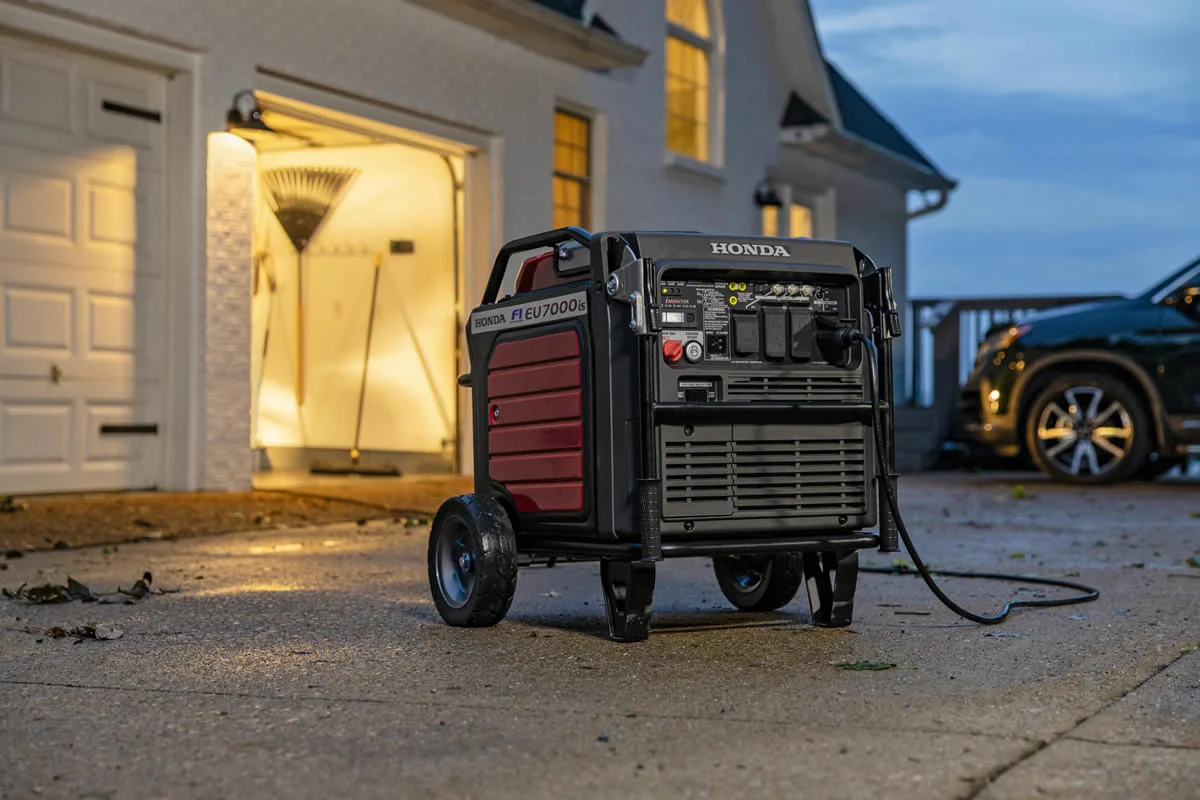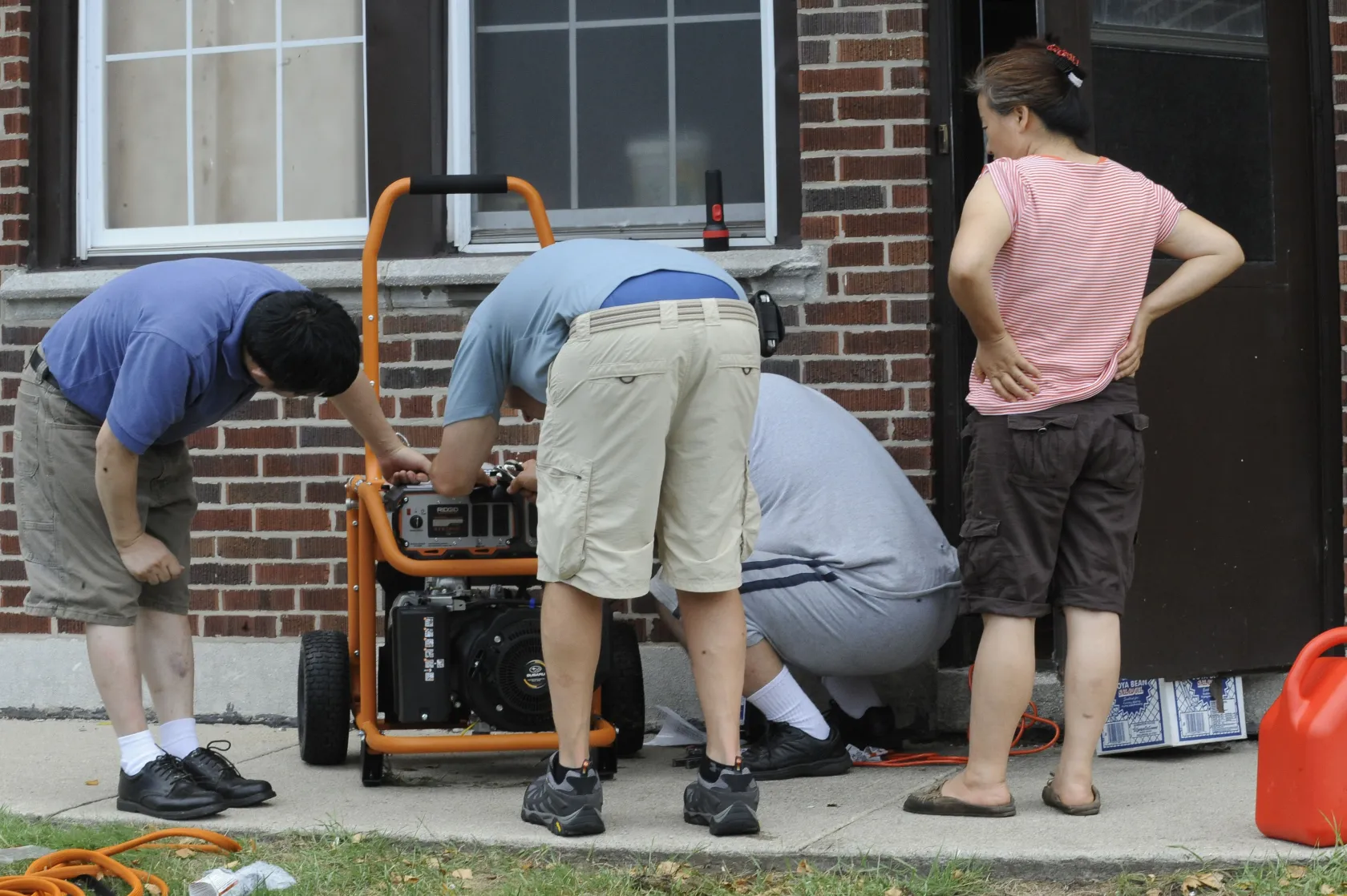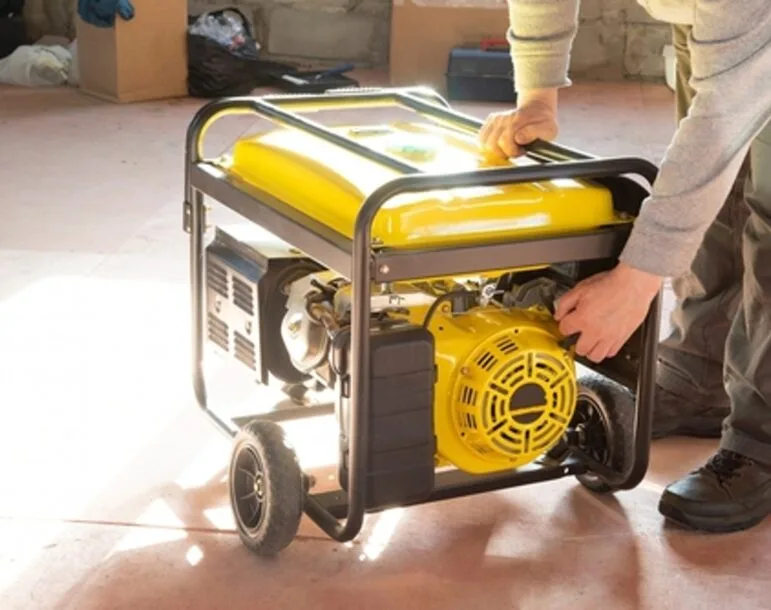Carbon monoxide from generators outside can enter a home when fumes drift toward vents, doors, and windows, or cracks in the structure. Yes, generators outside can still create a dangerous level of carbon monoxide if the exhaust points toward the home or the wind changes direction. Even short exposure can trigger symptoms of CO poisoning and send people to emergency rooms.
At Grounded Electric, our licensed team helps homeowners avoid this danger with alarms, safe distances, and airflow checks. Guidance from the Consumer Product Safety Commission confirms that fumes can become harmful during power outages in enclosed spaces or near openings.
Key Takeaways
- Carbon monoxide can enter when wind pushes fumes toward openings.
- Keep generators at least 20 feet away and point the exhaust outward.
- Install alarms on every floor and test monthly.
- Headache and dizziness need fast medical care.
- Licensed electricians install transfer switches safely.
Does a Generator Outside Give Off Carbon Monoxide?
A generator outside emits carbon monoxide when fuel is burned. This gas can drift toward vents and enter your home. Most portable generators create harmful fumes fast, and consumer reports warn about this risk. For homeowners comparing fuel types and efficiency, this guide explains what a Generac generator runs off of and when it is best used.
Can a Generator Outside Cause Carbon Monoxide Poisoning?
Poisoning can occur when exhaust reaches doors, windows, or vents. Wind can push fumes indoors, increasing the generator’s carbon monoxide exposure. An open garage door does not protect enclosed spaces.
Do Generators Produce Carbon Monoxide When Off?
Generators that are powered off do not create new fumes. Gas can stay in the air for a short time. Allow fresh air to circulate before approaching the equipment.
How Much Carbon Monoxide Does a Generator Produce?
A gas-powered generator can produce CO levels above 50,000 parts per million (ppm) near the exhaust, which is enough to become deadly in minutes. Generators can elevate these levels fast. Poor maintenance creates more fumes. Many people die each year from improper use.
How Carbon Monoxide From Generators Outside Becomes Dangerous
Wind can push fumes inside the home. Even short exposure can trigger symptoms of co poisoning. Track airflow during storms.
Can Trees, Fences, or Walls Block Exhaust?
Barriers trap fumes and push them toward vents. Keep open airflow.
Common Generator Placement Mistakes to Avoid
Do not place units near doors or decks. Do not store fuel near heat.
Carbon Monoxide From Generator Outside Symptoms
Symptoms can feel like the flu. Most symptoms include headache, nausea, and confusion.
Quick Symptoms Checklist
Move to fresh air right away.
- Headache
- Dizziness
- Nausea
- Confusion
Early Warning Signs to Watch For
Symptoms can appear fast. If symptoms improve outdoors, carbon monoxide may be the cause.
When Symptoms Become Life-Threatening
Severe headache, vomiting, or weakness means danger. Multiple people sick at once need emergency rooms.
What to Do if CO Exposure Is Suspected
Evacuate and call emergency services. Leave the house if alarms sound. Emergency rooms can provide treatment.
Post-Exposure Safety Steps for the Home
Open doors and windows and run fans. Inspect vents and schedule maintenance.
How to Prevent Carbon Monoxide Poisoning From a Generator
Place generators far from the home. Use alarms and watch the airflow.
Using CO Alarms Correctly
Install alarms on each floor and near bedrooms. Test monthly and replace damaged units.
Proper Carbon Monoxide Detector Placement
Mount alarms with clear airflow. Avoid blocked areas. Follow codes.

Safety Benefits of CO-Shutoff Features
Some generators shut down when gas rises. Safety labels help pick the right model.
Safe Generator Distance and Placement
Distance allows fumes to spread out. Avoid partial roofs and decks. If you live in a storm-prone area, review tips on selecting the best generator for hurricane season to stay prepared.
Consider Wind Movement During Operation
Wind can shift exhaust toward the home. Move the generator if fumes drift back. Homeowners often ask what size Generac generator they need, which depends on load, budget, and square footage.
How Far Away Does a Generator Need to Be From the House?
Keep generators at least 20 feet from the house. Point exhaust away from openings.
Is It Safe to Run a Generator on a Porch?
Do not run generators on a porch. Fumes can collect under roofs.
Never Use Generators in Garages or Sheds
Garages and sheds trap fumes. Generators indoors are very dangerous.
Fueling and Operating Safety Tips
Let the unit cool before adding fuel. Store fuel outside.
Approved Fuel Storage Containers
Use approved containers outdoors. Good labels improve safety.
Only Refuel When the Generator Is Cool
Shut it down and wait. Avoid spills and wipe drips. Inspect heaters each year. Space heaters should be checked as well.
Do and Don’t Checklist for Generator Placement
Do:
- Keep 20 feet from openings.
- Face exhaust away.
Don’t:
- Run under overhangs.
- Operate near walls.
Other Outdoor Carbon Monoxide Sources to Consider
Cars, grills, and gas heaters also make carbon monoxide. Keep them away from doors and windows.
DIY Wiring Limitations
Never connect generators directly to household wiring. Backfeed is harmful.
Annual Inspection Recommendations
Have your generator checked yearly. Service extends life and reduces danger. If you are local to New Jersey, schedule a full generator maintenance service in Wyckoff, NJ for inspection and adjustments.

Fuel Container Label Recommendations
Use child-safe caps and clear labels. Replace damaged containers.
Checking on Neighbors During Outages
Visits can catch early symptoms. Share alarm and placement tips.
Using Protective Generator Canopies in Rain
A canopy protects from rain while keeping airflow. To protect equipment from water damage, learn more about protecting your generator from rain and weather exposure.
Approved Accessories for Wet Conditions
Weather-rated canopies keep air paths open. Do not use tarps.
When to Contact a Licensed Electrician
Licensed electricians install transfer switches. They prevent backfeed and follow codes.
Grounded Electric and project manager, Barret Abramow, supports safe generator use. Head electrician Robert “Bobby” Mulholland reminds clients to maintain distance and airflow. With alarms, placement, and checks, you can protect your home from carbon monoxide from generators outside.
For help setting up safe backup power at your home, contact Grounded Electric to schedule an inspection or installation. Our licensed team can review your setup, answer questions, and help protect your family from carbon monoxide risks.



